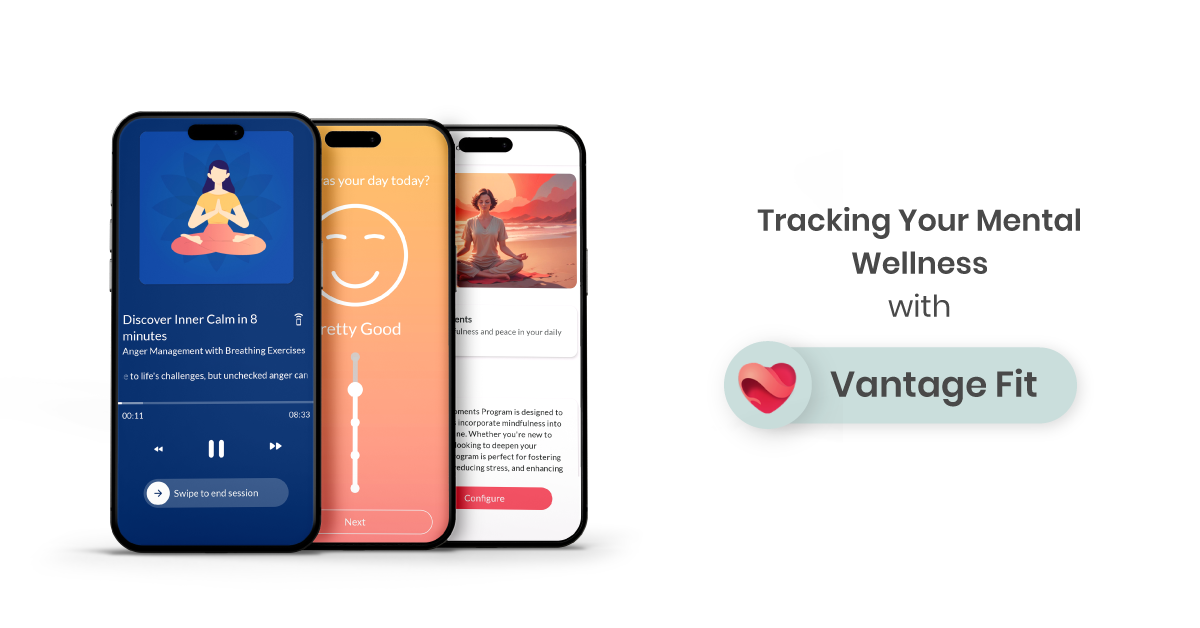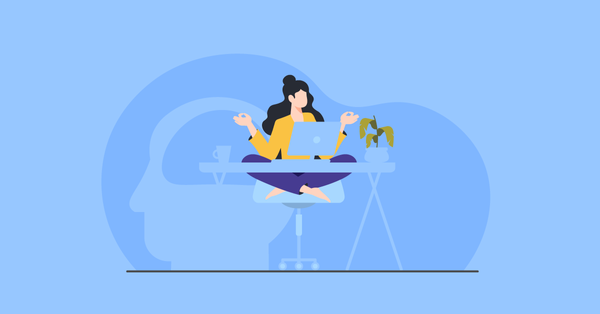Mental Health Days at Work: Benefits, Challenges & Implementation
Let's get real: working a 9-to-5 job today is anything but the cushy, stable gig people often imagine. The truth is that employees are among the most burned-out and mentally exhausted groups out there—and yet, many of us still aren't ready to have that honest conversation about mental health at work. I'm not just speaking from experience or general observation; the numbers are downright alarming.
Suppose you glance at the latest statistics on employee burnout and mental health. In that case, you might seriously rethink your wellness program—and wonder why you don't already have a designated mental health day at work.
Here's a quick reality check behind those polished emails and professional facades: According to a 2025 report from Modern Health, 62% of employees feel pressured to work through burnout or mental health struggles. Shockingly, only 36% of employees believe their employer provides adequate mental health coverage.
And it's not just about feelings—employee burnout is costing U.S. companies millions every year. Meanwhile, research from The Interview Guys indicates that burnout now affects 82% of employees, with younger generations, such as Gen Z, experiencing peak burnout as early as 25 years old—17 years earlier than the average American.
So, how can you prioritize your mental health at work while keeping a focus on your work performance? One way is by taking regular mental health days. In this blog, we will explain what mental health days are, their benefits, and how to implement them effectively to strengthen your entire organization.
What Are Mental Health Days?

A mental health day is precisely what it sounds like: a day you take off work with the specific goal of unwinding and recharging. It’s about giving yourself a crucial break to prioritize your well-being, especially when dealing with high levels of stress or anxiety.
How Is It Different From Sick Leave or PTO?
Unlike traditional sick leave, which is usually reserved for physical illness, or general paid time off (PTO) that employees might use for vacations, mental health days are preventive and aimed at managing stress before it escalates.
Employees might take a mental health day to cope with difficult life events or recover from intense work pressure. Others might simply use the time to pause and reset their emotional balance.
Why Are Mental Health Days Important?
While mental health days won't magically solve all the deep-rooted issues affecting well-being at work, they provide employees with the crucial time to take a break, de-stress, and genuinely prioritize themselves.
During these days, employees may engage in activities such as resting, attending therapy sessions, practicing self-care routines, or disconnecting completely from work-related communications.
By recognizing and encouraging the use of mental health days, workplaces play a crucial role in –
-
Destigmatizing mental health struggles and
-
Promoting a culture where taking care of one's emotional well-being is seen as just as important as physical health.
This approach can help employees feel supported and understood, making mental health days a vital part of real, everyday workplace experiences.
What Are The Benefits of Offering Mental Health Days?
Mental health days offer clear advantages for both employees and employers, fostering a healthier and more productive workplace. Here's a breakdown of the key benefits:
For Employees

-
Reduced Burnout: Mental health days help manage stress and prevent burnout, a condition that affects 82% of employees worldwide.
-
Higher Job Satisfaction: Feeling supported boosts motivation and engagement, addressing 60% of workers who feel emotionally detached from their work.
-
Destigmatizing Mental Health: Encourages open conversations, helping 87% of employees who hesitate to discuss mental health at work.
-
Better Self-Care: Provides time for rest, therapy, or personal wellness without guilt.
For Employers

-
Lower Absenteeism: Mental health days reduce long-term absences and productivity loss, saving billions annually.
-
Increased Productivity & Retention: Mentally healthy employees are 13% more productive; investing in mental health can yield up to 800% ROI.
-
Positive Workplace Culture: Supports kindness and psychological safety, improving teamwork and morale.
-
Stronger Employer Brand: Attracts and retains talent, especially as 68% of millennials and 81% of Gen Z have left jobs for mental health reasons.
In summary, mental health days are a win-win: they empower employees to prioritize their emotional well-being while enabling employers to cultivate a healthier, more productive, and loyal workforce.
Realities to Keep in Mind When Offering Mental Health Days
We need to be honest about offering mental health days. Many employees feel organizations simply record these days as another sick day—an expense, not a real investment in their well-being.
It can feel like a band-aid slapped on a system that constantly pushes employees to their absolute limits, with companies seemingly prioritizing profits over people's actual mental health. This perspective makes it clear that mental health days alone aren't going to fix deeper workplace issues like crushing workloads or toxic cultures.
However, few companies are making progress in addressing employee mental health to avoid bias in simple ways, such as:
-
Lingering Stigma: Employees often hesitate to take mental health leave due to fear of being judged as lazy or uncommitted or even facing negative reactions from management. Support often isn't truly there.
-
Potential for Misuse or Misperception: Some managers worry that employees might use mental health days as "fun days" or time off unrelated to genuine needs. However, what counts as mental health recovery varies. Activities like going to the movies or spending time outdoors can be valid ways to recharge mentally.
-
Not a Cure-All: These days offer short-term relief, but they don't fix systemic problems like excessive pressure, poor management, or a lack of ongoing mental health resources.
-
Broader Approach Needed: For mental health days to be effective, they must be part of a much larger, compassionate strategy.
-
A clear policy and fair enforcement: Having a transparent attendance and mental health day policy helps prevent confusion or misuse. Tracking absences fairly and focusing on actual work performance rather than policing personal time off is key.
Over-monitoring or invading employee privacy (e.g., checking social media) will damage trust and morale.
Implementing Mental Health Days: 8 Strategies and Best Practices
Introducing mental health days into your workplace requires thoughtful planning and commitment to ensure they truly support employees and the organization. Here are key strategies and best practices to consider:
1. Develop Clear, Transparent Policies

A well-defined mental health day policy is essential. It should clearly explain what mental health days are, how employees can request them, and any documentation or notice requirements. Transparency helps reduce confusion and ensure fairness.
Policies should emphasize that mental health days are as valid as physical sick days and encourage employees to use them without fear of judgment.
2. Train Managers and Leaders
Managers play a crucial role in the success of Mental Health Day or any other wellness initiatives. You can provide training to help them recognize signs of burnout or mental distress, respond empathetically, and support employees who take mental health days.
Ensure that leaders model healthy behaviors by openly discussing mental health and taking time off when needed. This sets a tone that mental well-being is a priority and reduces stigma, encouraging employees to feel safe using their mental health days.
3. Foster a Supportive Workplace Culture
Creating a culture where mental health is openly discussed and prioritized is key. Encourage regular conversations about mental well-being through team meetings, wellness programs, and internal communications to foster a culture of open dialogue.
Celebrate Mental Health Days as a positive step, rather than a weakness. When employees see mental health valued at all levels, they're more likely to take advantage of these days and seek help when needed.
4. Integrate Mental Health Days with Existing Wellness Programs
Make sure that the mental health days are a part of a comprehensive approach to employee wellness. Complement them with access to counseling services, stress management workshops, flexible work options, and employee assistance programs (EAPs).
5. Encourage Self-Care and Provide Suggested Activities

Try to help employees make the most of their mental health days by offering suggestions on restorative activities. These might include mindfulness exercises, nature walks, therapy sessions, digital detox, or creative hobbies.
Providing resources or partnerships with wellness providers can enhance the effectiveness of mental health days and reinforce their purpose as time for genuine rest and recovery.
6. Protect Employee Privacy and Avoid Micromanagement
Your employees should feel confident that their mental health information and reasons for taking time off remain confidential. Avoid intrusive questioning or monitoring of how employees spend their mental health days.
Focus on outcomes, such as overall attendance and performance, rather than policing personal time. This approach fosters trust and encourages honest use of mental health days.
7. Communicate the Value and Normalize Mental Health Days
Regularly communicate the importance of mental health days through newsletters, intranet posts, and leadership messages to promote awareness and support. Share success stories and testimonials to normalize their use and reduce the stigma associated with them.
8. Monitor and Adapt
Regularly evaluate the policy's effectiveness through anonymous employee surveys, utilization rates, productivity, or absenteeism metrics. Use this feedback to refine the policy and address any cultural or operational challenges.
8 Mental Health Days Activities for Your Employees
Here's a list of mental health day activities your employees can use to recharge because, to be honest, not every "self-care" tip works for everyone. The best part? It's all about what feels right for them.
-
Try some mindfulness meditation or yoga to calm the mind and ease stress.
-
Get outside—whether it's a walk in the park or just soaking up some fresh air. Nature really does wonders.
-
Dive into a hobby or creative project. Painting, cooking, writing—whatever sparks joy.
-
Catch up with friends and family. Sometimes, a good chat is exactly the therapy we need.
-
Pick up a book, journal your thoughts, or just spend some quiet time reflecting.
-
Use the day to see a therapist or counselor if that's what you need—mental health professionals are there for a reason. Don't shy away from seeking help.
-
Completely disconnect from work emails, calls, and screens. Seriously, turn off notifications and take a breath.
-
Treat yourself to some physical self-care—think baths, massages, or just stretching out tension.
Remember to share these ideas up front. It helps employees use their mental health days in ways that matter, rather than just scrolling endlessly on their phones. Because mental health days are about real rest, not just a break from the grind.
Support Your Employees' Mental Well-Being with Vantage Fit

Supporting your employees' mental well-being is no longer optional; it's essential for a thriving, productive workplace. Vantage Fit provides a wellness platform featuring mindfulness sessions, mood tracking, yoga, and expert resources to support employees in managing their mental health. It also provides employers with insights to offer timely support and foster a positive culture.
Ready to support your team's mental health? Contact Vantage Fit! today and start building a happier, more resilient workforce.
Frequently Asked Questions
1. How Do Mental Health Days differ from Sick Leave or Vacation?
Mental health days are specifically taken to address mental and emotional well-being, such as stress, anxiety, or burnout, while sick leave usually covers physical illness. Unlike vacation, which is for rest or leisure, mental health days are proactive breaks to manage mental health before issues worsen.
2. Are Mental Health Days usually paid or unpaid?
It varies by company. Mental health days can be paid or unpaid, part of sick leave, or rolled into paid time off (PTO).
3. How can you ensure Mental Health Days are used appropriately?
Clear policies, trust, and open communication are key. Employers should focus on overall attendance and performance rather than policing how employees spend their days.
4. Can Mental Health Days alone solve all workplace mental health issues?
No. Mental health days offer short-term relief but don't address systemic issues such as toxic culture or excessive workloads. They should be part of a comprehensive mental health strategy, which includes support programs and healthy work environments.
5. How many Mental Health Days should companies offer?
There's no one-size-fits-all answer. Some companies offer a few floating mental health days per year, while others integrate them into their sick leave or paid time off (PTO) policies. The key is balancing employee needs with business operations and a clear communication policy.
6. Are Mental Health Days legally required?
No, mental health days are not legally mandated in most places. However, some countries and regions have laws recognizing mental health as part of sick leave.




